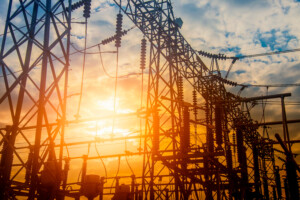When moving to a new area, researching gas and electricity providers should be one of your first priorities. However, even established homeowners can benefit from learning more about the energy companies in their area. It allows you to compare rates and take advantage of competing service offers. If you don’t know who your gas and electricity supplier is, there are several ways to track them down.
Utility vs. Energy Supplier
Many homeowners assume their energy is supplied by their local utility. While this is true in some states, in others there might be as many as three companies working together to power your home.
- Energy Producer. Owns and operates the power plant that generates electricity for your area. A separate organization drills and extracts natural gas, which is sold to a supplier. Depending on the resources available in your state, they may be based nearby or in another part of the country.
- Energy Supplier. Also known as an energy provider, they purchase gas and electricity from producers and then partner with a utility to transfer it to your home.
- Utility Company. They construct and maintain the energy network that delivers gas and electricity to customers. When there is a power outage, they are the ones responsible for repairing the lines.
For most of the 20th century, electric utilities produced, supplied, and delivered all the energy in the United States. Starting in 1996, however, states began opening up their energy markets, allowing customers to shop around and choose an energy plan that fit their needs. As a result, producers, suppliers, and utilities gradually split into separate entities as outside companies were allowed to enter markets previously closed to competition, leading to better choices.
States with Deregulated Markets
Not every state has embraced deregulation. Some still rely on traditional utilities, while others have deregulated their gas supply, but not their electricity. However, most states have at least some degree of energy choice, including seventeen states where you can now choose both your gas and electricity provider:
- California
- Connecticut
- Delaware
- Georgia
- Illinois
- Maine
- Maryland
- Massachusetts
- Michigan
- New Hampshire
- New Jersey
- New York
- Ohio
- Pennsylvania
- Rhode Island
- Texas
- Virginia
There are also fourteen states where you can choose your gas provider:
- Colorado
- Florida
- Indiana
- Kansas
- Kentucky
- Montana
- Nebraska
- Nevada
- New Mexico
- South Dakota
- Tennessee
- West Virginia
- Wisconsin
- Wyoming
Though not a state, people living in Washington D.C. can also choose their gas and electricity provider. As part of their effort to transition to renewable energy, Oregon has deregulated its electricity supply, but not its natural gas.
How to Find Your Gas or Electricity Supplier
People living in a regulated market don’t have to worry about their energy supply. Their utility is their supplier. To find your current energy supplier in a deregulated market, start by:
- Reviewing Your Energy Bill. Gas and electric bills provide a list of itemized charges. TDU (Transmission and Delivery Utilities) fees are paid to your utility provider, to help maintain the national grid, while “Supply Services” or “Supply Charges” are paid to your energy provider.
- Asking Your Real Estate Agent. If you’re moving into a new home, your agent can tell you who to contact in order to set up your gas and electric service.
- Asking Your Landlord. If you’re renting, your landlord should be able to tell you the name of your energy supplier, as well as the other gas and electric companies in the area.
- Contacting Your State’s Public Utilities Commission. Most states have online databases listing the companies that supply gas and electricity to their residents, including which addresses they service.
- Contacting City Hall. Your local municipality should also have a list of local gas and electricity providers, as well as which homes they power.
Because utilities manage infrastructure for every energy company in the area, they’re also a good resource. If they don’t know the particular company that supplies your home, they should be able to tell you who does. Once you know, you can look up your rates ‒ the amount you pay per kilowatt-hour of electricity or therm of natural gas ‒ and compare them with the other providers in your area, who might provide additional services.
Agway Energy Services
Comparing plans allows homeowners to find the best services in their area. Agway not only supplies your home with gas and electricity; we protect it with our EnergyGuard™ Home Repair Program. EnergyGuard™ covers your heating, cooling, and electrical systems from wear and tear. Home insurance doesn’t account for this type of damage, but we do.
When the need for repair occurs, our customers don’t have to waste time searching for a qualified repairman. They call us instead. We maintain a network of qualified technicians in your area and send the first available one straight to your door. There are no deductibles or service fees. We pay for the visit and all covered parts. Avoid costly repairs and unreliable service. Sign up and start enjoying the benefits of EnergyGuard™ today!
